#fisheries management
Text
Very good news for Pacific Bluefin Tuna!
#pacific bluefin tuna#fisheries management#biomass assessments#noaa fisheries#fish#commercial fishing#recreational fishing
3 notes
·
View notes
Text
Voluntary Guidelines for Securing Sustainable Small-Scale fisheries.

#fish#Small scale fisheries#sustainability#fisheries management#Food and agriculture organization (FAO)
0 notes
Link
In Senegal, the national dish of thieboudienne is entwined in the country’s history and culture. It’s a rich dish of fish, rice and vegetables that literally brings people together - traditionally eaten in communal fashion around a single dish.
But the preferred species for the dish is white grouper, and the fishery has collapsed in the face of aggressive fishing by locals and foreign poaching. And there are few other fish to turn to, as overfishing has “greatly diminished” other species in Senegal, where one in six people work in the fisheries sector, according to a report from the United States Agency for International Development.
Overfishing like that which has threatened thieboudienne is seen across the planet.
#ap#patrick whittle#grace ekpu#fisheries management#traditional foods#senegal#thieboudienne#white grouper
0 notes
Text
Manage fish resources and ensure that these can be used sustainably while providing healthy food at reasonable prices.
Fish, as well as aquaculture products, are an important component of a healthy diet. The EU is the world's biggest market for seafood. On average, 24.4 kg of fish or seafood per citizen are consumed every year in the EU. 75% of the consumed fish and seafood comes from wild fisheries.

Fish resources are not unlimited and overfishing can impact stocks' reproductive capacity. Without some control over who fishes what, some fish stocks may collapse or stop being economically viable to catch.
EU member states have defined common rules, through the EU's common fisheries policy, to manage fish resources and ensure that these can be used sustainably while providing healthy food at reasonable prices.
0 notes
Text
would it be too autistic of me to take random college courses about aquaculture when I have no interest in working in aquaculture facilities, I am just interested
#I mean#I went to college for fisheries and wildlife management so it is VERY adjacent#but this would be more for me than my career lol#Putting courses in my cart so i dont go insane returning to my college town for 1 semester to do 1 research paper course
16 notes
·
View notes
Text
June 8 is World Oceans Day
so here are some articles about women I taking care of our oceans
https://today.ucsd.edu/story/scripps-led-fellowship-program-promotes-equal-access-for-students-interested-in-scientific-diving

“In an effort to make the diving community a more inclusive and diverse space, Scripps PhD candidate Erica Ferrer and then-PhD candidate Alyssa Griffin (now Assistant Professor at UC Davis) launched the SCUBA DIVERsity Fellowship Program at Scripps in the fall of 2022. They have worked alongside Scripps Director of Diversity Initiatives Keiara Auzenne and Scripps Dive Safety Officer Christian McDonald to create this fellowship program that provides undergraduate and graduate students with scientific diver training, access to gear, and even swimming proficiency lessons for those who have limited experience in the water.”
#June 8#world oceans day#Women in Science#Sonya Legg#center of Ocean Leadership#great barrier reef#Sea Women of the Great Barrier Reef#Australian First Nations women in marine conservation#Sea Women of Melanesia#Catherine Cat O’Keefe#New England Fisheries Management Council#Guyana
38 notes
·
View notes
Text
The Supreme Court agreed Monday to consider overturning a nearly 40-year precedent by taking up a challenge to a regulation affecting fishing vessels in a case that is the latest conservative-led attack on federal bureaucracy.
The court will weigh whether to overturn a much-cited 1984 ruling, Chevron v. Natural Resources Defense Council, which said courts should defer to federal agencies in interpreting the law when the language of a statute is ambiguous.
Attempts to overturn the ruling, which the court has rarely invoked in recent years, is just one avenue of attack by conservative groups and business interests as part of what has been dubbed “the war on the administrative state.”
"The Supreme Court has an opportunity to correct one of the most consequential judicial errors in a generation," said Ryan Mulvey, a lawyer at the Cause of Action Institute, a conservative group that represents the challengers. The Chevron ruling "has proven corrosive to the American system of checks and balances and directly contributed to an unaccountable executive branch."
The Supreme Court, which has a 6-3 conservative majority, is skeptical of broad assertions of federal agency power.
The case itself is a challenge to a government regulation that requires fishing vessels to help fund the collection of scientific data to assist with fishery conservation and management. The court could still rule in favor of the challengers by limiting the scope of the Chevron decision without overturning it entirely.
The court took up an appeal brought by Loper Bright Enterprises and several other operators of fishing vessels that are active in the herring fishery off the Atlantic coast, which challenged the 2020 rule applying to New England fisheries.
The challengers say the National Marine Fisheries Service, the federal body that oversees ocean resources, did not have authority to issue the regulation under the relevant law, the 1976 Magnuson-Stevens Fishery Conservation and Management Act.
The rule implements a monitoring program that vessel operators are required to fund. As the challengers put it, operators have to pay up to $710 a day at certain times for independent observers to board their vessels and monitor their operations. The cost is a significant burden on small owner-operators, the challengers say.
The case, backed by conservative groups, is the latest attempt to undermine the power of federal agencies. Lawyers for the fishing vessel operators say a lower court that upheld the rule gave too much deference to the federal agency in interpreting the 1976 law.
The U.S. Circuit Court of Appeals for the District of Columbia rejected the vessel operators' claims in a decision in August, upholding a similar ruling a federal district judge issued the previous year.
The brief Supreme Court order noted that liberal Justice Ketanji Brown Jackson is not participating in the case. She was originally part of the appeals court panel that decided the case before President Joe Biden appointed her to the high court. She heard oral arguments but was not involved in the ruling itself.
#us politics#news#nbc news#2023#us supreme court#federal agencies#Chevron v. Natural Resources Defense Council#Cause of Action Institute#government regulation#deregulation#deregulate deez nutz#fishery conservation and management#Loper Bright Enterprises#National Marine Fisheries Service#Magnuson-Stevens Fishery Conservation and Management Act#U.S. Circuit Court of Appeals for the District of Columbia#justice ketanji brown jackson#biden administration
11 notes
·
View notes
Text
some lady dropped her resume off at work today and she had her marital status on it??
#shes single btw. if anyone wanted to date her#she had a pretty cool resume she was a fisheries manager in gambia for four years?? thats dope af wtf#girl i wish i was a fisheries manager in gambia…#sorry. not to doxx this random lady. but i thot that was so sick
3 notes
·
View notes
Text
Unveiling the Secrets of Life Below Water: Goal 14 for a Sustainable Future
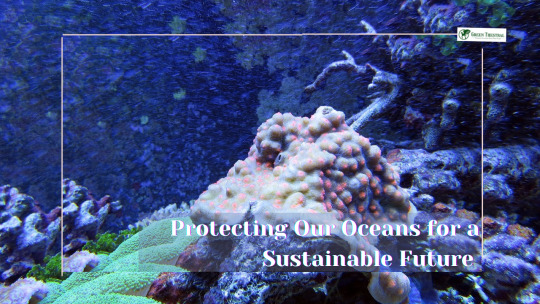
In our journey towards achieving a sustainable future, Goal 14 of the United Nations' Sustainable Development Goals (SDGs) plays a pivotal role. Life Below Water, as it is commonly referred to, focuses on the preservation and sustainable use of oceans, seas, and marine resources. With this goal, the international community aims to safeguard marine ecosystems, mitigate the impacts of human activities, and promote sustainable livelihoods for coastal communities. This article delves into the significance of Goal 14, explores the challenges faced, and highlights the initiatives that can help us ensure a healthier and more vibrant life below water.
Understanding the Importance of Goal 14
The Earth's oceans are vast and cover more than 70% of the planet's surface. They are teeming with life and harbor a remarkable diversity of species and ecosystems. From the mesmerizing coral reefs to the mysterious depths of the abyss, the oceans are a treasure trove of biodiversity, supporting millions of species, including plants, animals, and microorganisms.
Beyond their ecological significance, the oceans play a crucial role in regulating the Earth's climate. They act as a massive heat sink, absorbing a significant amount of the sun's energy and distributing it across the planet. Additionally, oceans play a vital role in the water cycle, facilitating the evaporation of water, which then falls as precipitation and sustains terrestrial ecosystems.
The oceans are not only important for the environment but also for human societies. They provide sustenance to millions of people around the world. Fishing, both for subsistence and commercial purposes, is a primary source of livelihood for coastal communities. The oceans also support economic activities such as tourism, shipping, and offshore industries, contributing significantly to global economies.
However, the delicate balance of marine ecosystems is under threat due to various human activities. Overfishing, driven by unsustainable practices and the demand for seafood, has led to the depletion of fish stocks worldwide. Large-scale industrial fishing, with destructive methods such as bottom trawling, threatens not only the targeted species but also the entire marine food web.
Marine pollution is another significant challenge faced by the oceans. Pollution from land-based sources, including plastic waste, chemicals, oil spills, and agricultural runoff, finds its way into the marine environment, causing severe harm to marine life and ecosystems. The accumulation of plastic debris in the oceans has reached alarming levels, forming giant garbage patches and causing entanglement and ingestion by marine organisms.
Habitat destruction and degradation are also taking a toll on marine ecosystems. Destructive practices such as coral reef destruction, coastal development, and the destruction of mangroves and seagrass beds result in the loss of critical habitats and the disruption of delicate ecological relationships. These habitats serve as nurseries and breeding grounds for many species, and their loss has far-reaching consequences for marine biodiversity.
Furthermore, climate change poses one of the most significant threats to life below water. Rising sea temperatures, ocean acidification, and sea-level rise are already impacting marine ecosystems. Corals, which are vital for the survival of countless marine species, are particularly vulnerable to rising temperatures and increased ocean acidity, leading to coral bleaching events and the degradation of coral reefs.
In recognition of the urgent need to protect and sustainably manage marine resources, Goal 14 of the United Nations' Sustainable Development Goals (SDGs) was established. Also known as Life Below Water, this goal aims to ensure the conservation and sustainable use of the oceans, seas, and marine resources for present and future generations.
Goal 14 encompasses various targets and indicators to guide efforts towards sustainable ocean management. One of the key focuses is the protection and restoration of coral reefs, which are among the most diverse and valuable ecosystems on Earth. Coral reefs provide habitat for numerous species, protect coastlines from erosion, and support vibrant tourism industries. By implementing measures to reduce coral bleaching, enhance reef resilience, and combat destructive practices, Goal 14 seeks to safeguard these vital ecosystems.
Another critical aspect of Goal 14 is the reduction of marine pollution. It calls for the prevention and significant reduction of marine debris, particularly plastic waste. Efforts are being made to promote better waste management systems, recycling and reusing plastics, and raising awareness about the detrimental effects of single-use plastics. Innovative technologies for ocean cleanup are also being developed to tackle existing pollution.
To address the issue of overfishing, Goal 14 emphasizes the need to restore fish stocks to sustainable levels. This involves implementing science-based management plans, combating illegal, unreported, and unregulated fishing, and promoting responsible fishing practices. Creating marine protected areas and adopting ecosystem-based management approaches can help protect critical habitats and ensure the long-term viability of fisheries.
Furthermore, Goal 14 acknowledges the urgent need to address ocean acidification, which poses a grave risk to marine organisms. By reducing carbon dioxide emissions and taking steps to enhance the resilience of marine ecosystems, such as protecting mangroves and seagrass beds, this goal aims to mitigate the impacts of ocean acidification and ensure the survival of vulnerable species.
Achieving Goal 14 requires a collaborative effort from governments, businesses, civil society organizations, and individuals worldwide. International cooperation is crucial to strengthen governance frameworks, regulate resource exploitation, combat illegal fishing, and promote sustainable practices. By taking collective action and embracing sustainable approaches, we can secure a healthier and more vibrant future for life below water.
Challenges and Threats to Life Below Water
The life below water faces a multitude of challenges that require immediate attention and concerted efforts. Overfishing, driven by unsustainable practices and illegal, unreported, and unregulated fishing, has led to a decline in fish stocks worldwide. The loss of biodiversity affects not only marine ecosystems but also the communities that depend on them for food security and economic opportunities.
Marine pollution poses another significant threat. Plastic waste, chemicals, oil spills, and other pollutants contaminate the oceans, harming marine life and ecosystems. The accumulation of plastic debris, in particular, has gained global attention due to its devastating impact on marine organisms and the potential consequences for human health through the food chain.
Ocean acidification, caused by the absorption of excess carbon dioxide from the atmosphere, poses a grave risk to marine organisms such as corals, shellfish, and plankton. Acidic waters can hinder the growth and survival of these organisms, disrupting the entire marine food web and impacting the livelihoods of coastal communities.
Initiatives and Solutions for a Sustainable Life Below Water
Achieving Goal 14 requires a comprehensive approach involving governments, businesses, civil society, and individuals. Several initiatives and solutions have emerged to address the challenges faced by life below water:
Sustainable Fisheries Management: Implementing science-based management plans, promoting responsible fishing practices, and combating illegal fishing are crucial steps towards replenishing fish stocks and ensuring the long-term sustainability of fisheries. Tools like marine protected areas and ecosystem-based management help preserve critical habitats and protect biodiversity.
Marine Pollution Prevention: Reducing plastic pollution and other sources of marine debris is vital. This can be achieved through improved waste management systems, recycling and reusing plastics, and raising awareness about the consequences of single-use plastics. Additionally, promoting the use of biodegradable alternatives and supporting innovative technologies for ocean cleanup can help mitigate the impact of existing pollution.
Climate Change Mitigation and Adaptation: Addressing climate change is fundamental to preserving life below water. Transitioning to renewable energy sources, reducing greenhouse gas emissions, and promoting sustainable coastal development are essential steps in mitigating the impacts of climate change on marine ecosystems. Additionally, enhancing the resilience of coastal communities through measures such as mangrove restoration, coastal protection, and sustainable tourism can aid adaptation efforts.
International Cooperation and Governance: Collaboration among nations is crucial for the effective implementation of Goal 14. Strengthening international frameworks, such as the United Nations Convention on the Law of the Sea (UNCLOS), and promoting regional cooperation can help combat illegal fishing, regulate resource exploitation, and ensure the sustainable use of marine resources.
Conclusion
Preserving life below water is not only crucial for the health of our oceans but also for the overall well-being of our planet. Goal 14 provides a roadmap for sustainable ocean management, aiming to conserve marine biodiversity, mitigate pollution, and promote the sustainable use of marine resources. By taking action at individual, local, and global levels, we can make a significant difference in ensuring a healthier and more vibrant future for life below water. Let us join hands and work together to safeguard the oceans for generations to come.
#Sustainable management of marine resources#Conserving marine biodiversity#Protecting coral reefs and marine ecosystems#Sustainable fishing practices for life below water#Reducing marine pollution for a healthier ocean#Restoring fish stocks for sustainable fisheries#Addressing the threats of overfishing#Combating illegal fishing activities#Preserving the delicate balance of marine ecosystems#Tackling plastic pollution in the oceans#Solutions for ocean acidification#Climate change impact on life below water#Sustainable tourism and the oceans#Promoting responsible coastal development#Achieving United Nations' Goal 14 for a sustainable future#Enhancing resilience of coastal communities#Sustainable livelihoods for coastal populations#Importance of ocean conservation and sustainability#Preserving marine habitats and species diversity#Ecosystem-based management for marine resources#Strengthening international cooperation for Goal 14#Achieving sustainable development through Goal 14#Role of marine protected areas in conservation#Long-term viability of marine ecosystems#Promoting sustainable shipping practices#Economic benefits of sustainable ocean management#Balancing human activities with marine conservation#The significance of Goal 14 in the SDGs#Ensuring a vibrant future for life below water#Global initiatives for the protection of marine environments
2 notes
·
View notes
Text
calvin would tinker a lot with machines i think. like he'd be messing around with turrets and security cameras in bio 1, or playing with bolts and screws and generally just trying to fix things, if only to pass the time, like cash registers that stopped opening and closing ages ago or an old circus of values.
in bioshock 2 he'd be making sure his mini-turret (who he's named, but heck if i know what he named it) is still up and functional. he'd fix his applebox drones up too
he wasn't an engineer by trade but give a man a few years to wander around freely as a sea-slug frankenstein and he'd learn to do anything.
#bioshock#calvin#twirls hair idk i think itd be fun if he managed to get up to hephaestus core#look at all the blueprints n just generally take it in#he was very hands on in the fisheries#would work with the machines and gutting stuff#raptures favorite sea slug
11 notes
·
View notes
Quote
Threatened species, like the Canterbury mudfish, have no legal protection in the regulations. There’s nothing stopping somebody catching and eating them on private land, other than the fact they’re probably not good eating. Perhaps odder still, one of our ‘At Risk’ species falls into our fishery industry’s quota management system. Up to 137 tonnes of endemic long-finned eels can be caught each year. Eels only breed once in their lifetime before dying so every eel which makes it to a dinner plate or into a can of pet food, is an eel which has never had a chance to reproduce.
Farah Hancock, ‘Aotearoa’s vanishing species’, RNZ
#RNZ#Farah Hancock#Aotearoa#New Zealand#Threatened species#Canterbury mudfish#legal protection#fishery industry#quota management system#long-finned eels
4 notes
·
View notes
Text
Cw/tw: Possible misogyny in academia
I'm in undergrad in the natural resource management dept . Today I attended a seminar two grad students were presenting their research projects at. I had the time and the seminar was held in the same room as my next class. I was truly interested in their topics which is why I attended in the first place (using goats to control invasive Eastern Red Cedar and the effects of fluctuating water levels on fish is nearby rivers).
The seminars are open to the public and NRM students get an email about them anyway.
I'm sitting in my usual spot for my next class when this guy sits next to me. A few minutes later he asks if I'm in the same department because he doesn't recognize me. I explain I'm in undergrad in this dept and why I wanted to attend. After the presentations he turns to me and asks if I understood what the grad students were talking about and if so how much.
I'm not sure if he meant well or not but it was still irritating. I don't know why he felt the need to ask why I was there or if I understood.
#natural resource management#academia#wildlife and fisheries#college seminar#research seminar#I think this is the first time I've experienced anything close to misogyny/sexism in my academic life
2 notes
·
View notes
Text
Highlight the promise of sustainability actions.
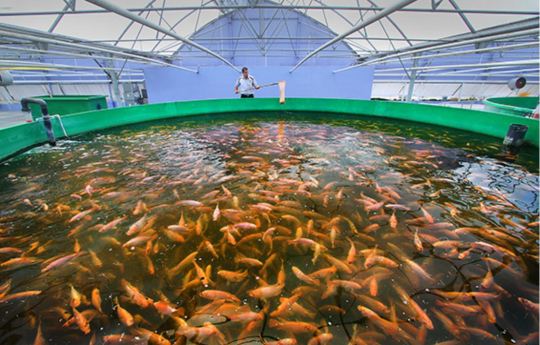
Worldwide per capita fish consumption has reached a new record of 20.5 kilograms per year and is poised to increase further in the decade ahead, underscoring its critical role in global food and nutrition security. Sustainable aquaculture development and effective are critical to maintain these trends, according to a new report from the Food and Agriculture Organization of the United Nations.
Total fish production is set to increase to 204 million tonnes in 2030, up 15 percent from 2018, with aquaculture's share growing from its current 46 percent.
FAO tracks the growing fish production and consumption.
#fisheries sustainability#food and agriculture organization (fao)#fish#food security#capita fish consumption#Sustainable aquaculture#fisheries management
0 notes
Link
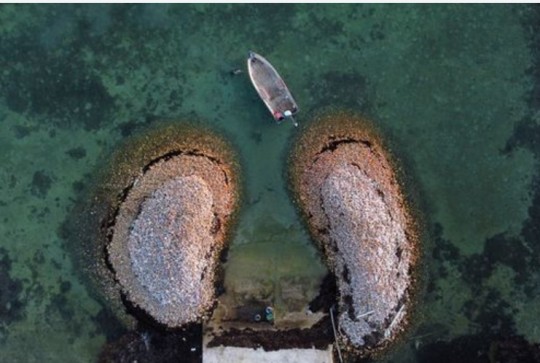
Tereha Davis, whose family has fished for conch from waters around the Bahamas for five generations, remembers when she could walk into the water from the beach and pick up the marine snails from the seabed.
But in recent years, Davis, 49, and conch fishers like her have had to go further and further from shore - sometimes as far as 30 miles - to find the mollusks that Bahamians eat fried, stewed, smoked and raw and are a pillar of the island nation’s economy and tourism industry.
Scientists, international conservationists and government officials have sounded the alarm that the conch population is fading due to overfishing, and a food central to Bahamians’ diet and identity could cease to be commercially viable in as little as six years.
I’ve never thought that the conch fisheries were sustainable; the loss of the abalone fishery foreshadowed this.
0 notes
Text
Update the status of fish stocks.
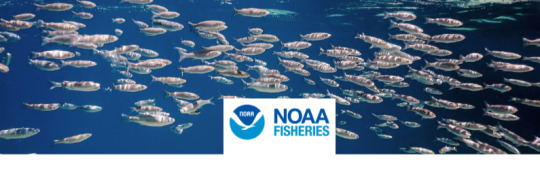
NOAA Fisheries updates the status of fish stocks managed under federal fishery management plans quarterly based on stock assessments completed during that quarter.
Stock status definitions include:
Overfishing – The annual rate of catch is too high.
Overfished – The population size is too small.
Rebuilt – A previously overfished stock that has increased in abundance to the target population size that supports its maximum sustainable yield.
These data also help NOAA Fisheries calculate its Fish Stock Sustainability Index (FSSI), which measures the performance of U.S. fish stocks selected for their importance to commercial and recreational fisheries.
Fishery Stock Status Updates.
0 notes
Text
Bluefin Tuna Index.
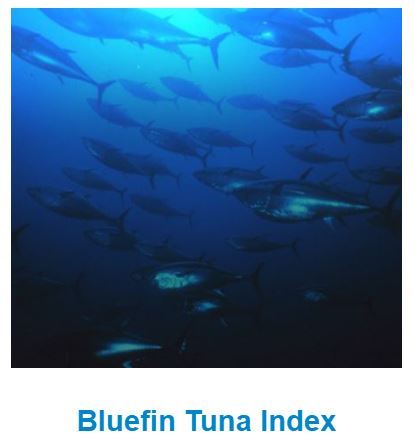
The Bluefin Tuna Index provides detailed information about bluefin tuna habitat to management bodies to inform decision making. The index tracks favorable habitat for the bluefin tuna in near-real time and is used by NOAA Fisheries in stock assessments. With better-informed catch limits and location information, commercial fishing operations are able to harvest their catch both successfully and sustainably.
Learn more Bluefin Tuna Index
#yellowfin tuna#tunafish#bigeye tuna#albacore tuna#bluefin tuna#tuna fishing vessels#managing tuna fisheries#NOAA
0 notes